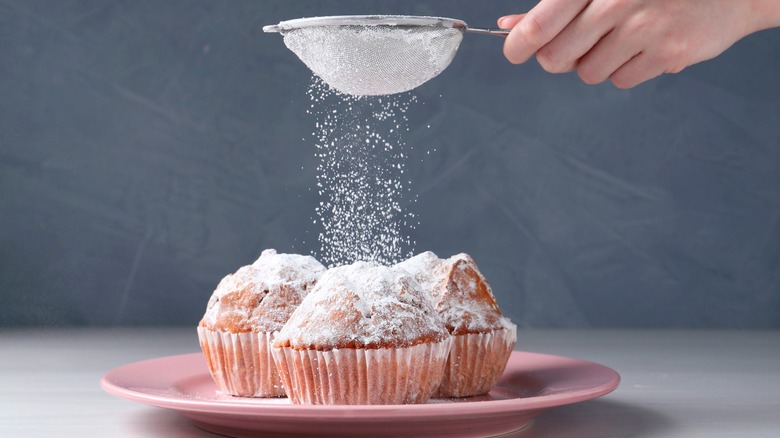How To Tell When Powdered Sugar Has Gone Bad
A dusting of powdered sugar adds a dainty textural element to your favorite sweet, and it's one of the best ways to turn your ordinary baked goods into bakery-style ones. Beyond its uses for food styling, powdered sugar is perhaps most famously used in royal icing. It works well because it dissolves quickly and therefore eliminates clumps in your icing. Its many uses make it a pantry staple, so much so that it may seem like it never goes bad. However, there are a few signs you should watch out for to ensure it isn't past its prime — specifically, a spoiled smell or signs of mold.
If it's stored properly, powdered sugar has a shelf life of up to two years or more. However, how you store powdered sugar can greatly impact its longevity. Before using it, be sure to check for any sort of discoloration that could indicate mold. Throw it away immediately if you see any signs of mold or bugs of any kind. If neither of these things are present and you want to be certain, smell it. If it smells like it's spoiled, you probably want to throw it out. If none of these issues are present, then your powdered sugar should be just fine, but if you want to be extra sure, taste it. If it tastes stale, you can use it in baking mixes, but you should avoid using it as a topping as it won't taste very good.
How to properly store powdered sugar
When storing powdered sugar, the most important tip to remember is to keep it in an airtight container at room temperature so the sugar isn't able to retain moisture. Even better, store it in freezer bag first, and then place it in the airtight container for maximum freshness. If it comes in contact with moisture or humidity, it can quickly lose its texture and clump up. This can also happen if it's stored in a refrigerator or freezer. Keeping it in an airtight container is also important to keep out any unwanted pests that might be attracted to the sweet, sugary delight.
If your powdered sugar is a little on the clumpy side the next time you reach for your container of it, don't worry. As with many other types of sugars, it's possible that even the slightest exposure to moisture — like when you're opening it quickly to grab a tablespoon or two — can lead to clumping. If this happens, just remember to sift the powdered sugar well, either with a whisk or through a strainer, so its clumps don't transfer onto your beautiful baked goods.

